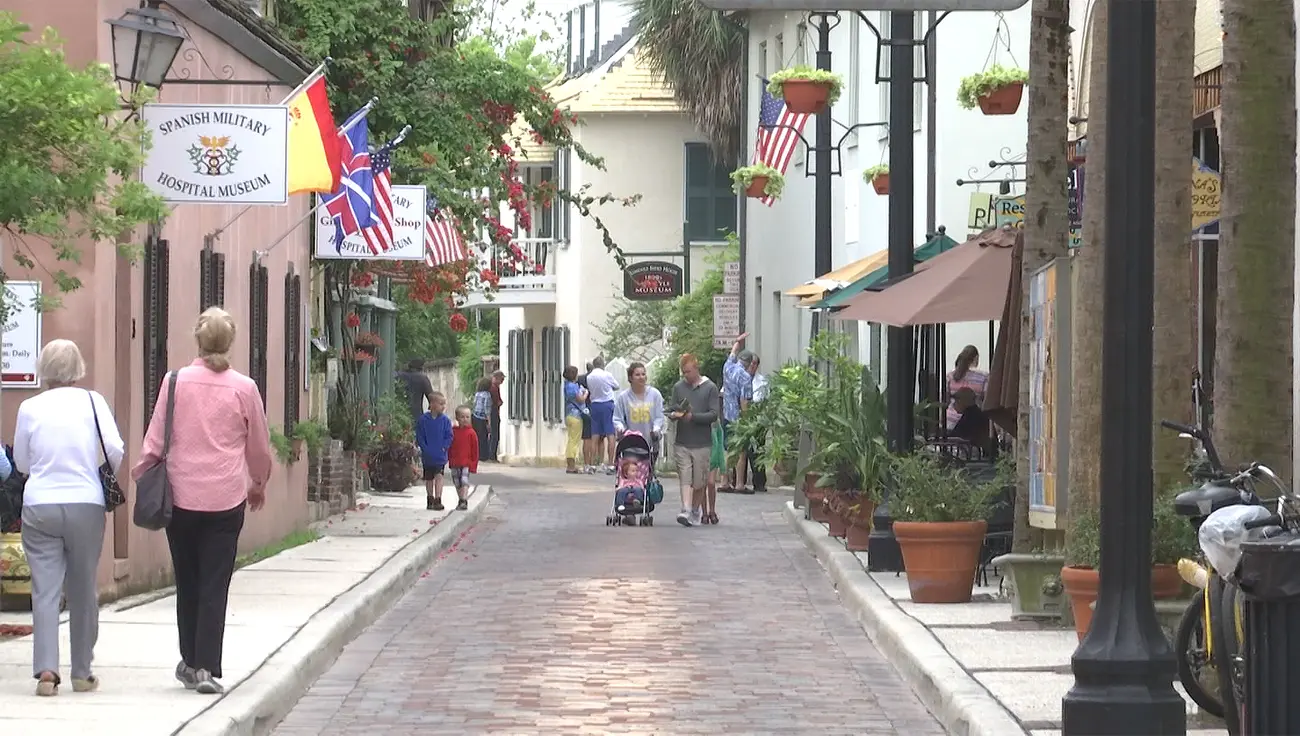Aviles Street in St. Augustine is the oldest street in the United States. Many of the Spanish colonial buildings that line the narrow brick street now serve as museums or businesses catering to tourists.
On March 2, 1800, at about 5pm, two men had an altercation on Aviles Street that resulted in one of the men’s death.
“I’ve been researching criminal court cases from the colonial period for a while,” says James G. Cusick, curator of the P.K. Yonge Library of Florida History at the University of Florida. “I’ve looked at slanders, I’ve looked at a child abuse case, I’ve looked at a number of murders, and this one was very interesting to me.”
It was a Sunday afternoon and the shops on Aviles Street were closed. Several young apprentices were hanging out together, including free black teenager Jorge Fish and slave Marcelino Sánchez from the tailor shop, and their friend Juan Seguí, a slave from the bakery a few doors down. A slave named Benjamin was also part of the group.
As the young men were talking, a slave named Juan Carlos, who was trained as a cobbler, nodded to the group as he walked past.
“Benjamin broke off from the group, took off his shoes, and threw them up against the door of the tailor shop, took off his hat and threw it through the open window, took off after Juan Carlos, grabbed the hat off of Juan Carlos’s head, and got into a fight with him,” says Cusick.
Several women tried to break up the fight, including a 60 year-old slave named Amelia, a free black woman named Frances who sold pastries at a shop on Aviles Street, and Reyna, a free black woman about 30 years old.
The fight continued as Benjamin chased Juan Carlos into the courtyard of the Leonardi House, the home of a wealthy Italian family. Benjamin proceeded to overpower and brutally beat Juan Carlos. A free black merchant named José Bonam tried unsuccessfully to break up the fight.
As a crowd gathered, Benjamin eventually turned to walk away from the fight. The bloodied and beaten Juan Carols pulled a knife and fatally stabbed Benjamin twice in the back.
A soldier arrived and arrested Juan Carlos.
Juan Carlos was put on trial, but the process was not what we would expect today. Most people are familiar with procedural courtroom dramas like the television series “Law and Order” that reflect how our modern justice system works. A murder is followed by a police investigation, an arrest, and a trial.
“The way court proceedings worked in the Spanish colonial period was almost more like a police investigation than a trial,” says Cusick. “There was no court room, there was no judge, there was no witness stand. Everything was done by deposition. Unlike modern lawyers, these men had no idea what was going to come up in testimony. They were learning things as they went along.”
At first glance, this killing could have been seen as a case of self-defense, since Juan Carlos was attacked by Benjamin, but as testimony was gathered, some evidence indicated that this may have been a premeditated murder.
Juan Carlos believed that Benjamin was having an affair with his wife, Maria Agustina. Benjamin left his shoes and hat behind at Juan Carlos’s home. Juan Carlos slashed the shoes and hat with a knife in front of Benjamin’s friends, saying that the same would happen to their owner.
Despite possible mitigating circumstances, Juan Carlos was found guilty of the murder of Benjamin.
The verdict came with a harsh sentence. Juan Carlos was to be lashed 200 times. If he survived that, he would spend 10 years doing hard labor. In an unusual theatrical twist, Juan Carlos would endure his lashing at various points along Aviles Street, to ensure the biggest possible audience.
The Haitian Revolution was occurring in 1800, and there was concern about a similar slave revolt in the United States. “I can’t think of any other reason that the punishment would have been delivered in this way,” Cusick says.
Today, visitors to St. Augustine can walk down Aviles Street where some of the buildings associated with this case still stand.
